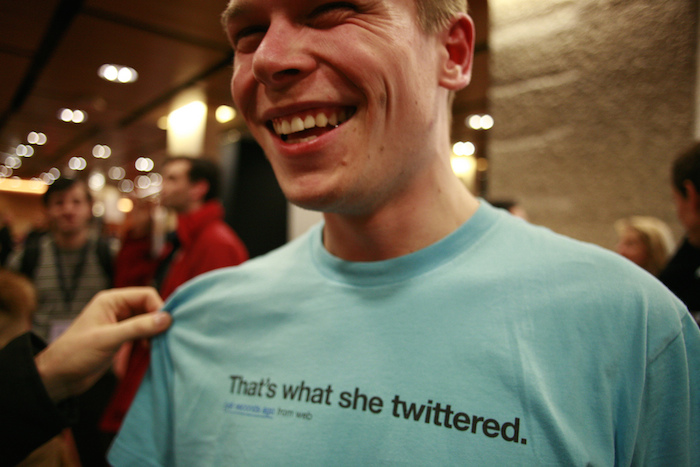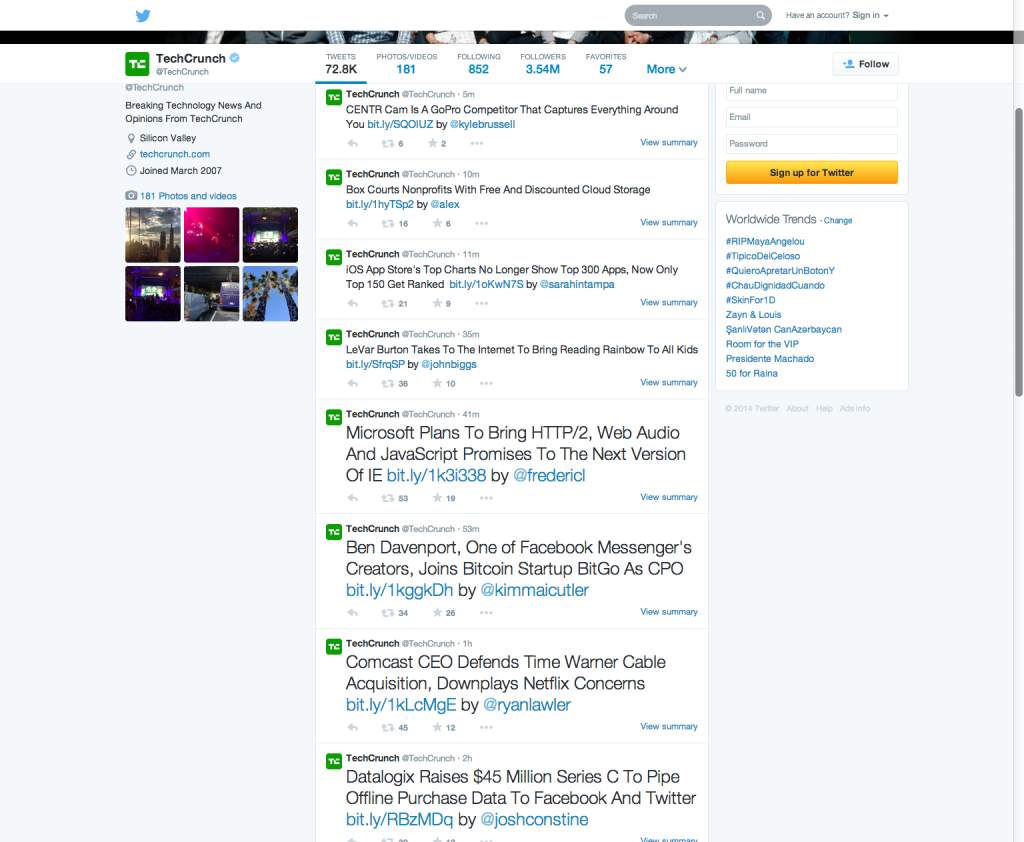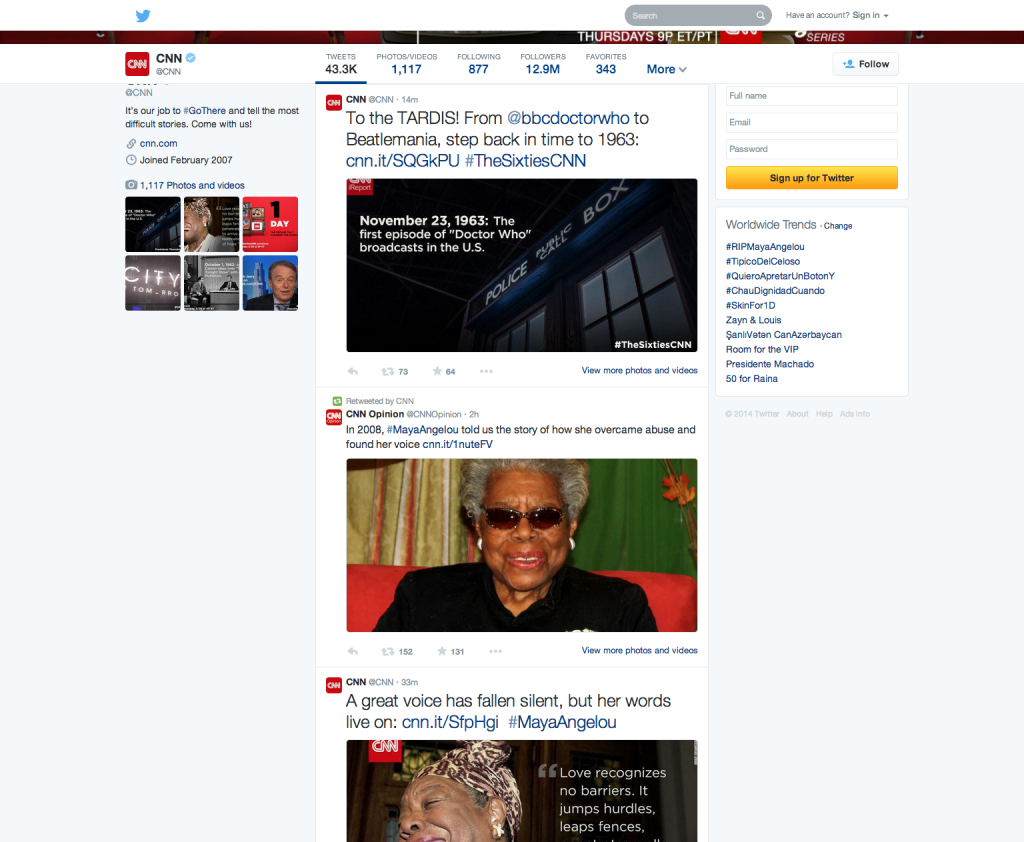Twitter is a curious thing. Over a billion accounts; yet only 250 million active users. A seemingly arbitrary 140 character limit; not quite the 160 of, say, SMS, as pioneered by Nokia in the 1990s. And with seemingly no rhyme or reason to its inexorable news feed flooding you with a veritable cacophony of communication, you wouldn’t be blamed for tossing it aside as little more than an absurd bit of social media excess; the whipped cream heaped atop an otherwise sufficiently fat-laden ice cream sundae.
But you would be wrong. Because, you see, Twitter is more than just whipped cream, a mind bogglingly, face distortingly powerful thing indeed, but only once you familiarize yourself with the following 3 things you need to know to easily master Twitter:
1. #Hashtags are powerful. Very powerful.
If you’ve ever seen a tweet, you’ve probably seen words prefixed with the “pound” or “hash” symbol; this thing: #. For example, #POTUS or #Ukraine. Or, perhaps most mysteriously of late, #MH370. Think of hashtags as the internet’s global index page. In the same way that looking up a topic in a book’s index, and discovering a list of all the pages where that topic can be found, so hashtags help you find each and every tweet containing that particular term.
In the above examples then, a search for the hashtag #POTUS will return all tweets about the President of the United States; #Ukraine will let you zero in on the tragic events unfolding between Ukraine and Russia; while #MH370 will help you discover absolutely nothing at all about the mind boggling mystery surrounding the very real “disappearance” of Malaysia Airlines Flight 370.
You can also have fun with hashtags, appending the ubiquitous # symbol to all manner of different words, including not only topics, but nouns, verbs, and adjectives. For example, #Apple, #awesome, or #flying, or even entire sentence fragments such as #WhatsTheMeaningOfLife ?
“The general rule is to choose the hashtag with the most activity.”
The purpose of hashtags should now be more apparent: they enable you to make sure that your tweets get “indexed,” and therefore targeted to, and discovered by, the most relevant audience. Suppose, for example, you wanted to target recent college grads. You’re only limited to 140 characters, so space is at a premium. Should you use the hashtag #grads or #collegegrads ? Or for that matter, the singular, #grad?
To get started using hashtags, perform a quick search of the hashtags you think would be most relevant to the tweet you’re about to send.The general rule is to choose the hashtag with the most activity. Narrow it down to the two or three most popular ones. Now, simply compose your tweet by either (a) incorporating your hashtags directly into a sentence, or alternatively, (b) appending the hashtags at the end of your message.
According to Dan Zarella’s superb blog on social engagement research and analytics, the more hashtags a tweet has, the more likely it is to be favorited or retweeted.
2. Tweet length Matters. Aim for 100-115 characters.
The optimal twitter length seems to be about 100-115 characters for purposes of maximizing retweeting, and there’s a very good and practical reason for this. Usually when retweeting a message, at a minimum, the letters “RT” — for “retweet” — are prefixed to the tweet. Then, almost invariably, the sender of the original message is cited by their twitter name, e.g., “RT @Twibbleio.”
“Keeping your tweets between 100-115 characters increases the likelihood that they will be retweeted.”
To appropriately retweet one of our tweets, for example, would require at a bare minimum 13 characters (spaces count). This means that an otherwise seemingly sufficiently brief tweet of 130 characters will be maddeningly frustrating to appropriately retweet with proper citation to the original sender as it will now become 143 characters: the 130 characters of the original message plus another 13 for the “RT @Twibbleio” prefix. The only way around this then would be the frustrating — and questionable — task of editing the original tweet, which is rather akin to altering someone’s words when quoting them since, after all, a retweet is indeed tantamount to quoting someone. And at the very least, it’s just a bother. The whole point about Twitter is that it should be a fast and spontaneous activity, and shouldn’t take any time and effort.
Keeping your tweets between 100-115 characters then isn’t just a benefit to your followers; it’s a benefit to you too, since it increases the likelihood that your tweet will in fact be retweeted.
For more statistical evidence of this, head back over to Zarella’s excellent blog where’s he done all the number crunching, complete with easy-to-read graphs.
3. Images matter. A LOT.
There’s no other way to say this: if you’re sending tweets without images, then you might as well not be using Twitter. And to be clear, we’re not talking about image links like pic.twitter.com. We’re talking about actual images that are embedded, and appear in, the actual tweet itself, without the need to click through a link.
“Tweets with images are a staggering 97% more likely to be retweeted.”
To understand why this is, just consider the following two twitter streams: which one is more engaging? Which one are you more likely to read and retweet?
Exactly. And this is a problem, and an important thing to consider if most of the content you tweet is from your own blog. Whether you tweet your new blog articles manually, or your blogging platform auto-tweets the content for you, it’s typically just going to be a tweet of your article headline along with a few hashtags. Not a very compelling thing to retweet, then.
Or perhaps your content isn’t a blog, but a YouTube channel. If ever there was quantitative data about how a picture (or video) is worth a thousand words, this is it: tweets with images are a staggering 97% more likely to be retweeted. Clearly then, you absolutely want to ensure that your content is constantly being tweeted with images or videos embedded directly into the tweet. And although admittedly a shameless plug for Twibble itself, this is a very useful point for us to share about this topic, especially since we don’t know of any product that does this.
If you’re interested to see the indisputable data on the impact images have on retweets, Dan’s got you covered here, too.
Wrapping it all up
So there you have it, your 3 step Twitter primer to help you maximize your social engagement by increasing the chance of getting retweeted, favorited, or otherwise engaged by your users. In short, keep the following best practices in mind to easily master Twitter:
1. Research and use hashtags liberally; generally, tweets with one or more hashtags are 55% more likely to be retweeted.
2. Keep your tweets to around 100-115 characters to allow quick and easy retweeting by others.
3. Absolutely make sure to embed images or videos in your tweet, and use a tool like Twibble to help you.
If you make a point to apply the above advice, you should see your engagement — and an increase in followers — nearly immediately. And suddenly, Twitter won’t feel quite so random and useless anymore, and you’ll hopefully find it to be a powerful driver of traffic back to your site.
Image via Scobleizer


